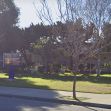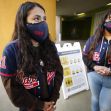If one kindergarten child trips another on a school playground, should the injured student be entitled to a $1.25 million award? Not if the activity was supervised by a teacher, the California Court of Appeal said as it reversed the judgment of the trial court. It seems that six years of litigation led to the conclusion that “boys will be boys.”
A unanimous opinion of a three-judge panel, authored by Judge Lawrence D. Rubin of District Five of the California Court of Appeal for the Second Appellate District, was issued on December 29. The court ruled that the Long Beach School District’s (the District) motion for judgment notwithstanding the verdict (JNOV) was improperly denied by the trial court and reversed that court’s decision because there was insufficient evidence of negligence.
A JNOV motion argues that no reasonable jury could reach the verdict that the jury reached in this case. It is given to “prevent a miscarriage of justice in cases where the verdict is rendered without foundation,” Rubin said to explain the court’s ruling.
The facts of the case are not disputed. In June of 2015, Malcolm Turner, a physical education teacher, sent a class of kindergarteners for a run on the school’s asphalt-paved playground. During the exercise, students were told to get into groups of six, run 120 feet to a nearby fence, then return. Turner told the students they could walk if they got tired. Plaintiff Kody Rankin got to the fence, then turned around for his return run. At this point, another boy named Andrew tripped him, and Rankin fell and hit his head on the pavement. He was taken to the hospital and diagnosed with a skull fracture. A doctor released him, told him to be careful, and suggested that he start wearing a helmet.
The next year, Rankin sued the school district for both negligence and “premises liability,” alleging the asphalt was in a dangerous condition and that the teacher had asked the children to “run in a manner that was not reasonable or safe.”
The District moved for summary judgment on both claims. Rankin countered with a declaration from a civil engineer that said the teacher had acted “far below the standard of care” when he told his students to run on asphalt. The District then objected to the engineer’s declaration, arguing he was “not competent to opine on the standard of care for elementary school teachers,” among other reasons. The trial judge granted the District's motion for summary judgment on the premises liability claim, finding there was no genuine issue of material fact. At the same time, he denied the motion to dismiss the negligence claim, saying that “reasonable minds can differ as to how closely young students must be supervised.”
At the time of the trial, Rankin, now ten, recounted what happened during the running accident. He said that Andrew “kind of tripped him,” causing his fall and head injury. The civil engineer who had issued a declaration also testified for Rankin and said that the playground running exercise should have been held on grass or a “rubberized surface.” Over objections by the District, he was allowed to testify due to his experience with “school safety incidents.”
A retired school superintendent testified as an expert witness for the District. He said that the running exercise was conducted “consistent with state standards,” and that Turner met the “commonsense supervision standard” that required teachers to be “within the sight and sound of their students.”
The trial court’s jury verdict found the District negligent and awarded Rankin $5.75 million in damages. The District then moved for a new trial, claiming there was insufficient evidence for a finding of negligence. The court granted a new trial, but only on the issue of damages, conditioned on plaintiff’s acceptance of a remittitur, or order that sent the case back to the trial court and reduced damages to $1.25 million. At this point, the District also moved for a JNOV due to insufficient evidence and attorney misconduct. The trial court denied the JNOV and both the District and Turner appealed, sending the case to the Court of Appeal.
In his opinion, Rubin first addressed the issue of attorney misconduct as he was required to do by the California Code of Judicial Ethics. He wrote that one juror sent a letter to the trial judge after Keith J. Bruno, the plaintiff’s attorney, made improper remarks during closing argument. Bruno said that “the name of every juror would be disclosed to “ensure plaintiff’s parents knew each juror’s name…,” which violated a promise of juror anonymity. He also suggested that plaintiff’s parents “would either be grateful to the jury, giving out hugs, or angry at them,” causing the jurors to fearfully “take off down the hallway and leave as quickly as they can.” Bruno also “implored the jury to see plaintiff as their own son.”
Rubin found these statements improper and found grounds for misconduct because precedent finds an attorney’s closing argument appeal to juror’s self-interest can “undermine the jury’s impartiality.” Bruno also told the jury that teacher Turner was on his cell phone at the time of the accident, which was false.
Rubin then went into a detailed discussion of the reason for granting the JNOV due to attorney misconduct, insufficient evidence of negligence, and the wrongful admission of expert testimony. He concentrated on the negligence claim, explaining that to prevail, a plaintiff must show duty, breach, causation and damages. He wrote that a school district has the “duty to use reasonable measures to protect students from foreseeable injury at the hands of third parties acting negligently or intentionally.”
Rankin argued that the collision between the two students was caused by Turner’s inadequate supervision and the unsafe design of the playground. The District believed the action of Rankin’s classmate Andrew was the proximate cause of his injury and not any “omission” by the teacher. Rubin reviewed case law as well as the expert testimony of plaintiff’s civil engineer and concluded, “The evidence is that the accident occurred suddenly and greater supervision would not have prevented it.” Since Turner was on the playground, paying attention and providing proper supervision, “Plaintiff failed to show a causal link between his injury and any negligent failure to supervise.”
He also found fault with Rankin’s argument that centered on the design of the run, saying the expert opinion, “relied purely on speculation unsupported by the record” and “cannot rise to the dignity of substantial evidence.” Nor did he find that the use of asphalt was improper. In conclusion, the opinion said that under the standard of review for proper denial for a JNOV, the court must affirm “if substantial evidence — contradicted or uncontradicted — supports the jury’s conclusion.” He concluded it was “was legally insufficient for the jury to have found for plaintiff on causation and breach of duty.” The appellate court then ruled that the “trial court improperly denied the District’s JNOV motion, and vacated the District’s motion for a new trial concerning damages.






